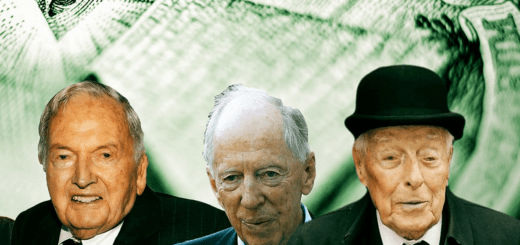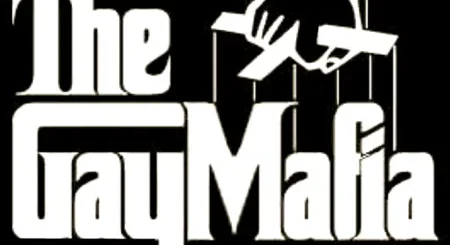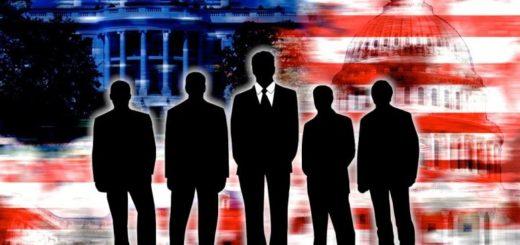China/Russia Collaboration on Economic Development
Comment: Uncle Satan destroys economies around the world while China & Russia build economies. Is it any wonder everyone HATES the United States and all are going to go on board with Russia & China?
SUBSCRIBE to EIR Daily Alert Service
Could China and Russia Collaborate Against Latest U.S. Financial Sanctions?
April 19 , 2021 (EIRNS)—Rampaging U.S. sanctions policy hits advanced and underdeveloped nations, “adversaries” and avowed allies, aiming to reduce living standards, lifespans, and national capabilities for economic progress. The latest financial sanctions against Russia—forget the pretext—is already pushing up Russia’s discount rate (likely from 4.5% to 5% this week) and the costs of credit throughout its economy. True, Russia has a federal budget surplus and not much international debt ($41 billion), and plans to issue only about $3.5 billion worth of new debt this year—which will be bought domestically. But it and all holders of its sovereign debt now must deal with the potential of a next step by the U.S. Treasury—perhaps in response to the condition of Alexey Navalny in prison—to extend the buying ban to existing Russian sovereign debt; i.e., to the secondary ruble bond market. Thus ruble bonds are already losing value, hurting the ruble and Russia’s ability (including its sovereign wealth funds) to raise capital.
But on Friday, April 16 Reuters reported that the People’s Bank of China (PBC) had given China’s state-owned commercial banks the authorization to buy $8.5-$10 billion worth of additional gold for their reserves, for delivery in April or early May. This is a very large purchase; these banks had been importing only about $600 million/month in gold over the past year or more, which was all they were given quotas to buy by the PBC.
If both China and Russia have large gold reserves (Russia already does), the imbalance is that Russia has large yuan reserves, while China has very small ruble reserves. But China can monetize some of this gold reserve, including by using it to issue credit to build ruble reserves. Thus it could not only become a healthy and helping market for Russia’s ruble debt; it could also issue new gold-reserve credit—along with Russia—into new credit facilities for development projects in other countries. This is a productive way of using China’s foreign exchange reserves which are growing again, to just over $3.2 trillion.
This doesn’t mean China can or wants to create a gold-backed yuan and “bring down the dollar” or “create a new yuan-based monetary system,” or similar claims. China’s dollar-denominated assets are $3.5 trillion; holdings of U.S. Treasuries; dollar loans to China’s commodity suppliers; Belt and Road Initiative project loans issued in dollars. People’s Bank of China Deputy Governor Li Bo, at Boao Forum April 18, reiterated, “Our goal is not to replace the U.S. dollar or other international currencies. I think our goal is to allow the market to choose, to facilitate international trade and investment.”
What the gold-reserve buildup does mean is that China can take, and may be taking now, a specific step to support and provide debt financing to Russia to the extent necessary to stabilize the euro and Russian interest rates; and, the two countries could, if they decide, use their gold reserves to go further in creating development project credit facilities.
Global Times Defends Developing Nations’ Industrialization against Climate Geopolitics
April 19 , 2021 (EIRNS)—The editorial in the April 18 Global Times, “To Deal with Climate Change, China-U.S. Cooperation Is Important and Sensitive,” takes the global anti-Malthusian resistance shown by India and others to another level. The developing nations 2009 resistance at the UN Copenhagen “global warming” summit to population reduction and genocide is revived.
The editorial begins with reserve, pointing out that after the two countries’ special envoys for climate change met over April 15-16, it is “fair to say that China and the U.S. have communicated quite effectively and achieved some results. China has not yet announced plans for its top leader to attend the [April 22-23] climate summit; analysts are waiting for things to become clearer.” The editorial likewise points out that “the general environment among the big powers is not good. The U.S. wants to show leadership by working with China and Russia to address the climate challenge, while it is also obstructing China and Russia in other spheres. That is not what normal relations among great powers should be like.”
But then the principles of economic development against environmental extremism become very clear indeed. “UN climate action involves the fundamental interests of humanity, and the specific arrangement for reducing emissions concerning all countries’ major development interests,” says GT.
“The developed countries have completed industrialization, while developing countries are still in the process of industrialization, and some have just started this process…. People’s living standards are still low in these countries, and it is particularly important to create more resources to improve people’s livelihoods through further industrialization.”
GT states that the U.S. has used its power to force more obligations on countries, while taking benefits.
“In an extreme scenario, if the world is about to promote carbon neutrality today, then the world’s economic development pattern will be perpetuated as it is today. The development gap between the developed and underdeveloped countries will become permanent.” The newspaper reminds that while the American elite fight over many issues, they agree on U.S. hegemony. “The current U.S. administration is trying to play the role of a leader and thus squeeze developing countries’ room for growth, as the previous U.S. administration desired.
“China and the U.S. are both the largest emitters; the two countries have huge differences in population and economic development, but the U.S. wants China to take more responsibilities in reducing emissions. It is worth observing the relation between such [environmentalist] pressure from the U.S., and the U.S.’ geopolitical move to pressure China.”
It concludes: “We should promote that the common interests of humanity are jointly defined by the interests of people from all countries, rather than by a handful of countries that want to monopolize this definition.”
Schiller Institute President Helga Zepp-LaRouche suggested today that the editorial has a clarity that would not have come without the LaRouche movement’s organizing and reports exposing the Green New Deal. She called it the strongest statement since the 2009 announcement of the G77 nations that they would not sign the Copenhagen “suicide pact” of population reduction at the 2009 UN “Climate Change” summit.


SUBSCRIBE to EIR Daily Alert Service
Russian International Affairs Council Posts Schlanger Exposé on Caesar Sanctions
April 19 , 2021 (EIRNS)—An article by Harley Schlanger, “ ‘Humanitarian Sanctions’ Are Killing Syrians, While New Sanctions Threaten To Crash the Russian Economy: They Must Be Overturned,” just written for LaRouche publications on Helga Zepp-LaRouche’s call to revoke the Caesar Sanctions, and how the U.S. Congress was incited to pass them, has been posted on the Russia International Affairs Council (RIAC) site. In addition, the RIAC tweeted the article to its 9,500 Twitter followers. RIAC is an institution of the Russian Foreign Minister, and is directed by Foreign Minister Sergey Lavrov.













